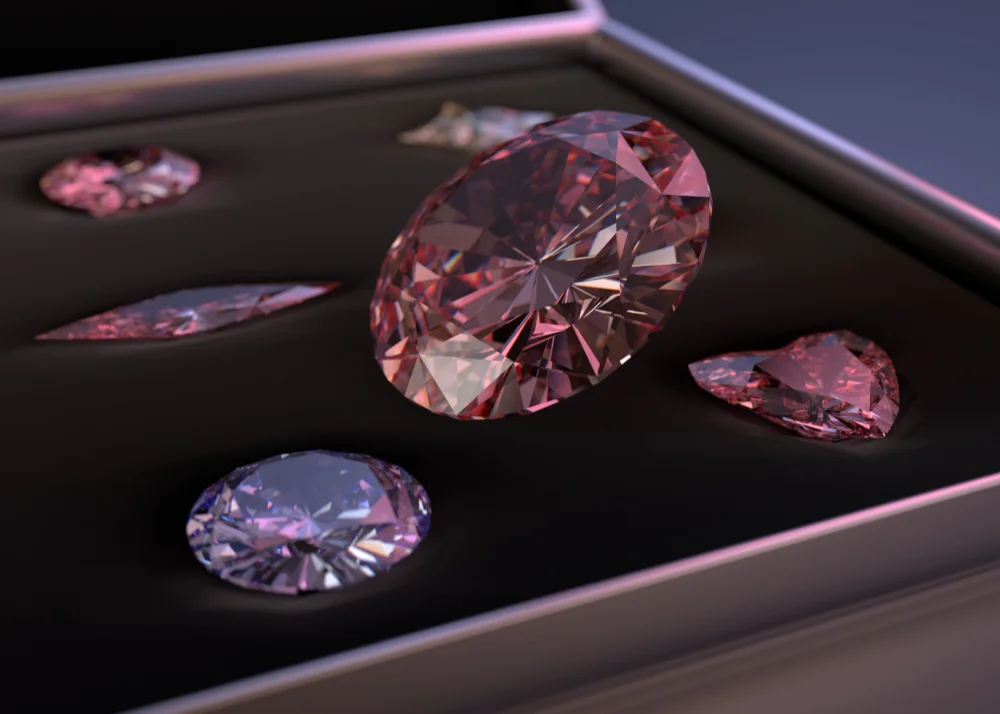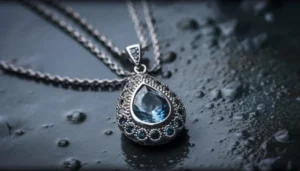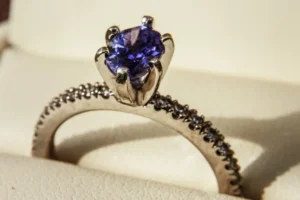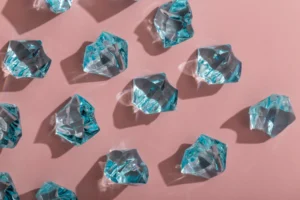Have you ever looked at an old ruby ring or pendant and wondered, “Can I bring back that rich red shine without sending it to a jeweller?” You’re not alone. As a gem enthusiast who once inherited a dusty ruby brooch from my grandmother, I found myself staring at its dull surface, unsure if restoring its beauty was even possible without risking damage.
Well, I tried. And after a weekend of trial, error, and a few YouTube rabbit holes, I learned that polishing a ruby at home is very doable—if you follow the right steps.
In this guide, I’ll walk you through a hands-on process to polish your ruby safely, using tools and materials you likely already have or can easily find. We’ll also hear from gem experts on what to avoid, ensuring your ruby retains its value and beauty for years to come.
Why You Might Want to Polish Your Ruby at Home
Rubies, though second only to diamonds in hardness, can accumulate grime, scratches, or a cloudy film over time. If your ruby has lost its lustre, polishing might help revive it—but only if it’s natural and not a treated or synthetic stone.
Expert Note: According to the Gemological Institute of America (GIA), many rubies are heat-treated to enhance colour and clarity. Polishing a treated ruby the wrong way can lead to damage or diminished value. Always verify your ruby’s treatment status before starting.
Whether it’s part of a vintage heirloom or a favourite piece of jewellery, home polishing gives you control over the care and restoration of your gem—without the cost of professional services.
What You’ll Need: Tools and Materials
Here’s a simple list to gather before you start:
- A soft lint-free cloth (like microfibre)
- Warm water
- Mild dish soap (avoid anything acidic or abrasive)
- Soft-bristled toothbrush or jewellery brush
- Polishing compound (e.g., cerium oxide or aluminium oxide)
- Felt polishing pad or rotary tool with a soft attachment (optional)
- Loupe or magnifying glass (to inspect your ruby)
Note: Avoid baking soda, toothpaste, or household cleaners—they’re too harsh and can cause microscopic scratches.
Step-by-Step: How to Polish a Ruby at Home
Step 1: Clean the Ruby First
Before polishing, it’s crucial to remove surface dirt, oils, or residue.
- Mix warm water with a few drops of mild soap.
- Soak the ruby for 10–15 minutes.
- Use a soft brush to gently clean the surface and setting.
- Rinse with clean water and pat dry with a soft cloth.
Tip: Hold the ruby under light while drying to spot leftover grime or scratches.
Step 2: Evaluate the Ruby’s Condition
Take a close look at your gem:
- Is it cloudy or scratched?
- Are there chips or cracks?
- Does it have any coating or surface treatment?
If the damage is severe or you’re unsure about treatments, pause and consult a gemologist.
Step 3: Apply the Polishing Compound
- Dampen your felt cloth or pad slightly.
- Apply a small amount of cerium or aluminium oxide.
- Gently rub the stone in a circular motion for 1–2 minutes.
- Check the shine under a light.
- Repeat if necessary—but don’t overdo it.
Real-Life Experience: When I first tried polishing my ruby brooch, I used too much compound and ended up with a foggy film. Less is more.
Step 4: Final Rinse and Buff
- Rinse the ruby thoroughly with clean water.
- Use a dry microfibre cloth to buff the surface.
- Let it air dry before placing it back into jewellery.
And voilà—your ruby should now gleam like it just came from the jeweller’s case.
Common Mistakes to Avoid
1. Using Harsh Chemicals
Avoid anything acidic or alkaline, like vinegar or bleach. These can degrade both the ruby and its setting.
2. Skipping the Cleaning Step
Polishing a dirty gem can grind dirt into the surface, creating tiny scratches.
3. Using DIY Abrasives
Toothpaste or baking soda may seem harmless but can damage the surface more than help it.
4. Not Checking for Treatments
As mentioned, treated rubies require a different care approach. If in doubt, consult a certified gemologist.
Expert Insight: What the Professionals Say
Dr. Olivia Hart, a gemmologist with over 15 years of experience, says:
“Polishing at home is fine for general upkeep, but not for deep scratches or treated stones. If your ruby has fractures filled with lead glass, even mild polishing can cause irreversible damage.”
A 2021 study in the Journal of Gemmology supports this, highlighting that over 90% of commercial rubies undergo some form of enhancement.
So while polishing can restore surface shine, it’s not a fix-all solution.
FAQs
Can I polish a ruby with toothpaste?
No. Toothpaste is abrasive and can leave tiny scratches.
How do I know if my ruby is real?
Look for inclusions, check the weight, or consult a jeweller. Real rubies are heavier than glass imitations and often show internal flaws.
What if my ruby is loose in its setting?
Always tighten the setting before cleaning or polishing to avoid damage or loss.
How often should I polish a ruby?
Every few months, depending on wear. For heavily worn items, consider annual professional care.
Can I use a Dremel or rotary tool?
Yes, but only with a soft pad and light touch. High speeds or pressure can damage the stone.
Final Thoughts: Is It Worth It?
If you love your jewellery and want to keep your rubies radiant without a trip to the jeweller, home polishing is a rewarding skill to learn. It’s hands-on, surprisingly calming, and gives you a deeper appreciation of your gem’s history and resilience.
But always remember: when in doubt, consult a professional. Polishing is about enhancement, not perfection.
What’s Next?
Tried polishing your ruby at home? Share your experience in the comments or let me know what tools worked best for you. Got a gem that seems beyond saving? I’m happy to help you decide what to do next.
Stay curious—and keep your sparkle alive.
You may also want to learn that can you clean jewelry with a toothpaste?
If you want to read more such blogs then make sure to visit our homepage.




